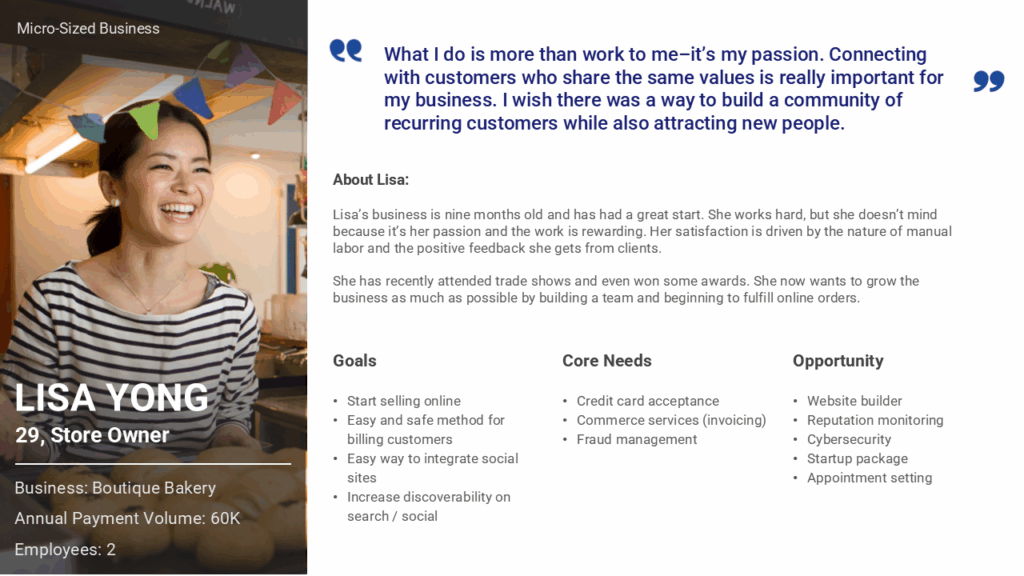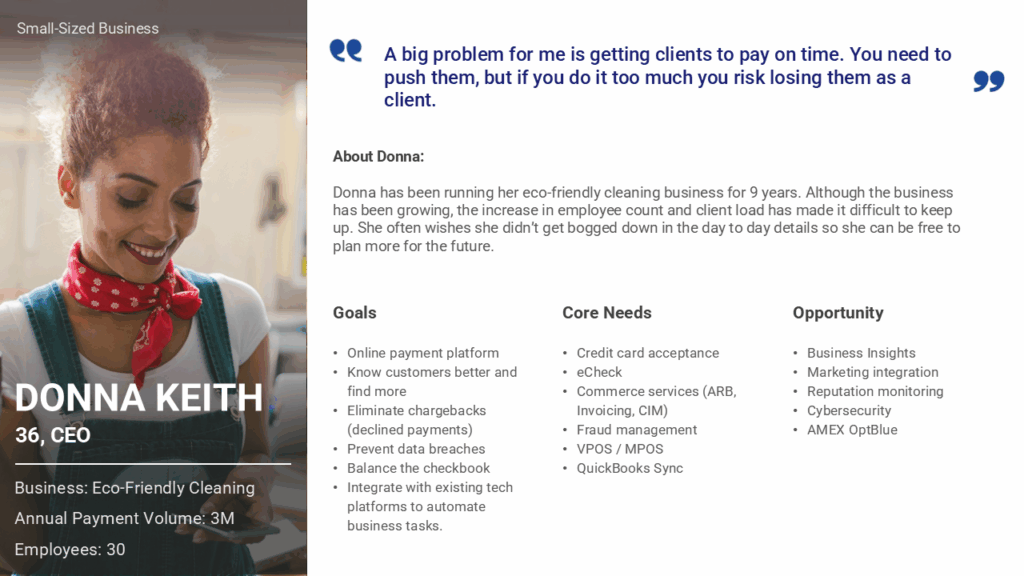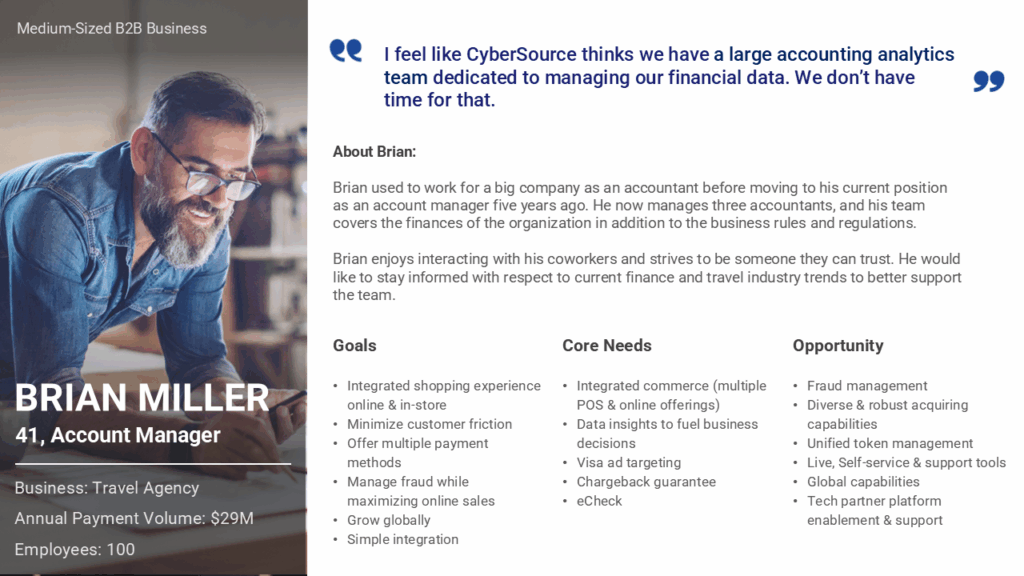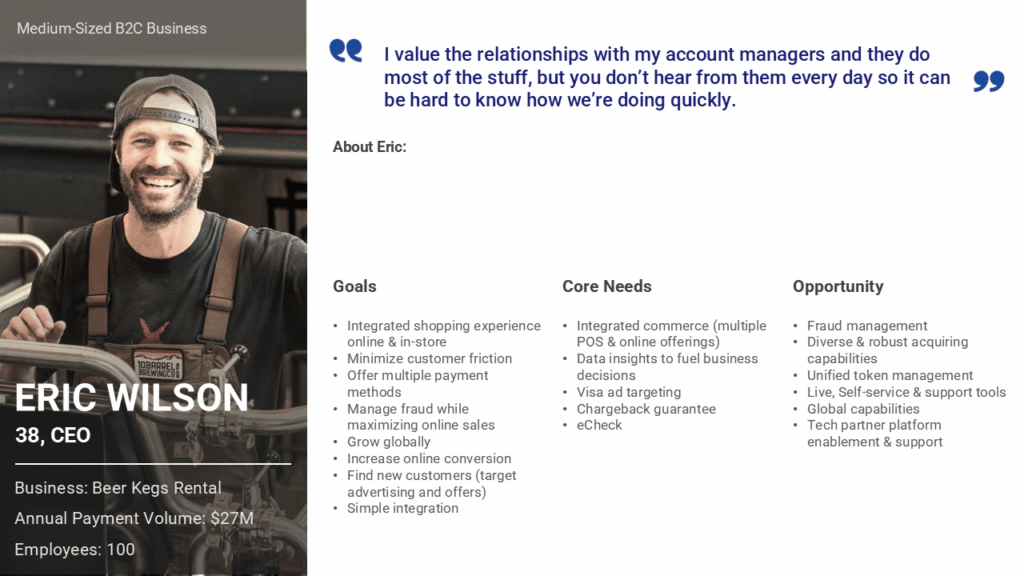I tackled critical UX issues within a fragmented payment platform by leading the redesign of transaction settlement workflows. Modernizing the design system for accessibility and establishing governance resulted in a streamlined, user-centric experience and a scalable foundation. This initiative showcases my ability to drive significant UX improvements in complex environments.
CHANNELS:
DESKTOP |
MOBILE APPLICATIONS
ROLE:
DESIGN LEAD
MY TEAM:
6 UX DESIGNERS | 3 PLATFORM DEVS |
ACCESSIBILITY COACH | PRODUCT OWNER

From Lagging to Leading: Injecting Design into Payments
Payment technology companies grappled with fragmented systems, poor transaction data management, and tools that couldn’t scale across business sizes. The pandemic-driven rise in omnichannel payments exposed critical UX gaps, hurting user satisfaction and operational efficiency. At the same time, growing security threats and the rapid shift to digital payments made it clear: a user-centric, scalable platform was no longer optional—it was essential to streamline experiences, reduce risk, and drive business success.
As Product Design Lead, I directed a core systems team and collaborated with product management to overhaul a payment technology company’s transaction settlement (paying or remittance) workflows, addressing a suboptimal user experience. I led the initiative to modernize the enterprise design system for flexible use across channels to ensure WCAG 2.1 accessibility and streamline contribution through a new governance model. My leadership emphasized cross-functional collaboration, user-centered and data-driven design, iteration, and strong usability.
Transaction success rate through task completion was below the benchmark of 78%
Task Completion Rate for key payment flows measures the percentage of users, with and without disabilities, who can successfully complete essential tasks like sending money or paying bills.
In a poor transaction user experience, the average task completion rate is significantly below the ideal benchmark of 78%. Studies suggest that any rate below 50% is considered very poor, indicating a significant usability issue. This lagging indicator signals the payment process is either confusing, too lengthy, or involves too many steps, resulting in a high drop-off rate.
The average person makes roughly 46 payment transactions per month. This includes bill payments, purchases, and peer-to-peer payments. The payment technology company has a network that includes over 130 million merchants globally. With average payment task completion rate below benchmarks (which must factor in people with a reported disability), the number of lost payment opportunities is significant.
Approximately 15% to 20% of the global population experiences some form of disability, which can impact their ability to make payments. This translates to roughly 1.3 billion people.
Leading the Charge for Change
To overhaul the payment workflow, the team and I embarked on a crucial journey of discovery. We immersed ourselves in user definitions to shape our perspective through stakeholder interviews, workshops, and usability testing that uncovered key pain points. Issues like cumbersome data entry, unclear error handling, and inconsistent interface elements topped the list. This qualitative research was then validated and refined with analytics data, ensuring our personas—segmented by customer company size (small to enterprise)—accurately reflected user behaviors and needs. This data-driven approach allowed us to craft detailed personas and scenario-based workflows that aligned with critical product management metrics. These activities also led to directly addressing core business value drivers in the payment technology industry:
- Driving Business Value: We focused on increasing CLTV through a seamless user experience, reducing customer operational costs by streamlining workflows, and accelerating time to market with enhancing the enterprise design system.
- Solidifying Scalability and Compliance: We designed for a consistent, modular system to handle growth and the offering of new payment methods, while also mitigating risks and adapting to evolving regulatory requirements.
A User-Centered Strategy for Success
I led the creation of a clear governance process for how the core systems teams could manage and update the enterprise design system. It helped our design, product, and tech teams work together to ensure any changes to the enterprise design system were well-planned, prioritized, and integrated. This was really valuable because it allowed the core systems team to quickly add accessible components and work with domain teams to get new features out faster for different types of customers and products.
FLEXIBLE DESIGN GOVERNANCE
Without strong design system governance, ad-hoc component requests would lead to fragmented experiences, duplicated work, and weakened brand consistency. The approach implemented effective governance to prevent these issues by enforcing a strategic, centralized review process. The process prioritized high-value, reusable components aligned with business goals. This not only sped up development and reduced technical debt but also laid out a cohesive user experience and scalable design system—turning design efforts into a catalyst for efficiency and long-term impact.
Domain/Initiative Track ( blue)
“Business as Usual work” is independently prioritized and road-mapped by domains. New component requests branch off from the regular track, domains would need to use an interim solution for their next release.
Components Track ( yellow)
Needs for new or enhancements components identified in the Domain Track would be worked on in a parallel track. Domains would use the Intake Process to start this conversation. Approved and packaged components would be ready for domains to prioritize in their next release.
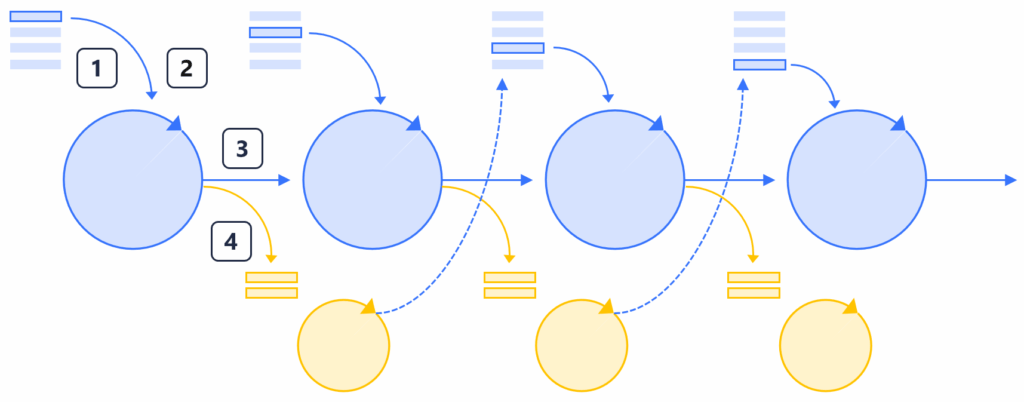
A New Era of Customer Engagement and Efficiency
The core systems team, domain product pods, and I combined our efforts to improve the transaction settlement product utilizing the enterprise design system. This wasn’t just a facelift; it sparked a revolution and business unit shift. The successful launch and use of payment workflow components became the cornerstone of enterprise design system governance. The impact rippled outwards into other enterprise products, proving the power of user-centered design and collaborative development. Here’s what that meant in real terms:
- Happier, More Efficient Users: Positive feedback and faster task completion times confirmed a significant boost in user satisfaction and efficiency.
- Tangible Business Gains: Payment task completion rates increased by 15%, time-to-market for new transaction settlement features decreased by 25%, and adoption rates for new component features soared by 30%.

INNOVATING FOR THE FUTURE WITH AI
Looking ahead, the business unit began annual planning for architecting an intelligent transaction settlement experience powered by AI. Imagining workflows that anticipate your needs as merchant and customer, proactively guide you through potential errors, and adapt to your unique role in the transaction settlement journey. AI sentinels will ensure accessibility for everyone, while real-time fraud detection safeguards every transaction. Instant AI-powered support will be at your fingertips, and continuous behavioral analysis will fuel an ever-evolving, frictionless user journey.
CHECK OUT THESE OTHER CASE STUDIES, SCENARIOS, and stories

Optimizing supply chain data entry through user feedback at a global scale.

Educating marketers to better communicate energy efficiency to customers.

Changing the way headphone devices were configured for engineers.

Integrating iterative design into strategic drilling portfolio planning to maximize impact.
